Top 15 Countries With The Weakest Currency in the World: A weak currency is one that has lost value while the value of other currencies has increased. A currency is considered to be weak when its value falls in comparison to other currencies.
A weak currency is caused by a number of variables, the most important of which is a country’s economic weakness. A strong currency is associated with a healthy economy, whereas a weak currency is associated with a poor economy.
The following are some of the most important aspects of a weak currency to keep in mind:
a. When compared to other currencies, a weak currency denotes a decline in the value of a country’s currency.
b. Weak currencies result from a poor economic structure or a fragile economy.
c. When a country’s currency is weak, exports become less costly.
d. Without the help of any external influence, a formerly weak currency can restore its power.
Recommended: Countries with the highest currency in the world 2024
Fundamentally weak currencies have a number of characteristics in common. Inflationary pressures, long-term current accounts, and budget deficits, and sluggish economic development are all examples of this. If currencies are freely exchanged, countries with weak currencies may have significantly greater levels of imports than exports, resulting in more supply than demand in international foreign exchange markets. While a momentary weakening of a major currency gives its exporters a price edge, this benefit might be wiped out by other systematic concerns.
Also see: Differences Between programming and coding
Top 15 Countries with the Lowest & Weakest Currency in world 2024
1. Iranian Rial (IRR): The Iranian rial was once again the world’s most vulnerable currency. Iran’s economy has been severely harmed as a result of multiple sanctions. Iran’s national budget is currently facing a significant deficit because of its inability to sell petroleum to the global market (which accounts for around 70% of annual revenue).
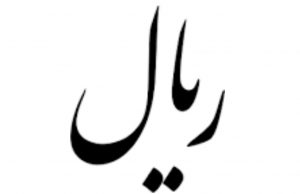
The Iranian Rial (IRR) has depreciated dramatically against most peers in recent years, with additional devaluation projected as the oil-producing nation continues to face international sanctions led by the United States. Iran’s access to commodities markets has been severely restricted, which, along with an embargo on oil imports from the country, has resulted in a significant economic collapse in the country. From a low of 38871.1 in January 2017, today’s Pound-to-Rial (GBPIRR) exchange rate of 54867.7 reflects a 41.15 percent increase in the Pound Sterling’s favor.
1 USD = 42,025 IRR
2. Vietnam Dong (VND): Vietnam is now attempting to move from a centralized to a market economy, which has had an impact on its currency. With the shift from a centrally planned to a market economy, the nation has moved from one of the world’s poorest to one of East Asia’s most active emerging markets, putting it in the lower-middle-income group.
Despite continuing internal improvements that are expected to boost the economy in the next years, the Vietnamese Dong (VND) is still a bargain when compared to the British Pound Sterling (GBP), with £1 equaling 30285 VND. The dong has had a limited influence on the global economy due to investor apprehension about investing in relatively unfamiliar currencies.
1 USD = 22,764 VND
Recommended: Advantages and Disadvantages of e-banking
3. Venezuelan Bolivar Soberano (VES): The Venezuelan currency is one of the cheapest in the world. The economy experienced hyperinflation of over 830000 percent as a result of the impacts of Covid 19, which was one of the causes for the currency’s depreciation to a record low in 2020.
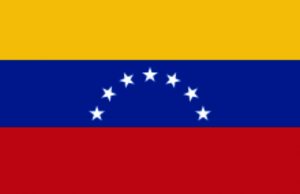
The Venezuelan central bank attempted to stabilize the country’s economy in the first quarter of 2021 by issuing new banknotes in denominations of 200000, 500000, and 1000000.
1 USD = 4,000,815 VES
4. The Rupiah currency of Indonesia: In Southeast Asia, Indonesia is a well-developed and economically stable country. The exchange rate of its currency, however, is quite low. Despite being Southeast Asia’s largest economy and a firmly middle-income country, the Indonesian Rupiah remains one of the world’s weakest currencies in terms of the exchange rate, which is even more astonishing given that the country has the world’s 10th largest economy by purchasing power parity.

The country’s regulatory authorities have tried everything they can to bolster the national currency, but their efforts have had only little results.
14253 IDR = 1 USD
Recommended: Best Programming Languages for Artificial Intelligence
5. Uzbekistani Sum (UZS): The start of an ambitious program of market-oriented reforms by the Uzbek government in 2017, which was unprecedented in the country’s modern history, triggered the 2017 wave of devaluation.
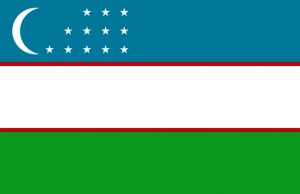
“The Government’s National Development Strategy for 2017–21 aims to transform the country by liberalizing the economy, reshaping the role of the state in the economy, modernizing agriculture, strengthening governance, creating markets, including in financial services, enabling private sector growth, investing in human capital, and improving social protection and service delivery for all citizens,” according to The World Bank.
As a consequence of their monetary policy liberalization, the Sum’s exchange rate against the US dollar was established at 1 USD = 8,100 UZS on September 5, 2017, with a projected range of 8,000-8,150 UZS for 1 US dollar.
1 USD = 10,667 UZS
6. Guinea’s currency (GNF): Guinea, a West African country, has one of the weakest currencies in the world, with 1 USD worth 9782 Guinean Francs (GNF).
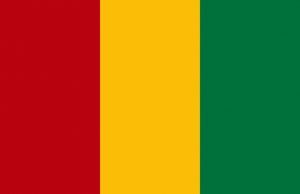
The nation is rich in mineable minerals and has a thriving agricultural sector. Despite its advantages, Guinea is a poor nation with many challenges ahead of it, making a favorable GBP rate unlikely for a long time.
1 USD = 9782 GNF
Also see: Countries with the most beautiful women in the world
7. Sierra Leonean leone: Sierra Leone is a poor African country that has faced several issues that have caused the native currency to devalue. There was a struggle recently, and the deadly Ebola virus has reappeared. Despite great progress, the country continues to be plagued by poor infrastructure and poverty.
In August 2021, the Bank of Sierra Leone voted to rename the nation, Sierra Leonean Leone. The New Leone will be used to replace existing banknotes, with one New Leone equaling 1,000 old SLL. The SSL has recently lost ground against the GBP due to a disputed 2018 general election, as well as persisting post-conflict effects such as high young unemployment, corruption, and weak governance, with the GBP/SSL gaining more than 106 percent from mid-2016 to the present.
1 USD = 10430 SLL
8. Lao Kip: Given that Lao People’s Democratic Republic (LAO) is one of the fastest developing economies in East Asia and the Pacific, its currency exchange rate is unexpectedly poor. In recent years, improved access to power, schools, roads, and other infrastructure has allowed Laos to carve out a significant position as an energy exporter. Economic growth has averaged 7.8% each year during the recent decade.
Despite the improvements, the Lao Kip (LAK) continues to trade poorly versus major currencies, with the Pound-to-Kip rate (GBPLAK) now trading at 11200.
1 USD = 9,574 LAK
Recommended: Best Ways to Make Life Easier and Enjoyable
9. Paraguayan Guarani (PYG): Inflation, corruption, poor education, a high number of destitute people, considerable unemployment, and other issues have plagued Paraguay’s economy.
Cotton and soybeans are exported by Paraguay, although they are insufficient to support the country’s economic needs.
1 USD = 6.914 PYG
10. Cambodian Riel (KHR): Despite Cambodia’s continued strong economic growth, the Cambodian Riel remains extremely affordable, with an average growth rate and the distinction of being the world’s sixth fastest-growing economy.
Many Cambodians now choose to pay in US dollars, causing the native currency to depreciate. 4,077 KHR is equal to 1 USD.
Recommended: Highest-paid Athletes In The World 2024
11. The Ugandan shilling
Rates in Ugandan shillings:
USD equals 3,500 UGX (US dollar to Ugandan shilling).
EUR equals 4,007 UGX (Euro to Ugandan shilling).
The East African Shilling was replaced by the Uganda Shilling in 1966. In Kenya, Uganda, Tanganyika, and Zanzibar, the latter served as the accepted form of payment. Currently in use are notes with the following values: 1,000, 2,000, 5,000, 10,000, 20,000, and 50,000.
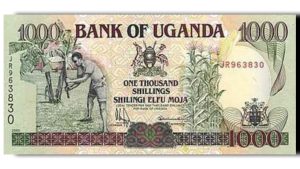
A relatively stable currency is the Ugandan Shilling. Its value has declined by no more than 5% during the previous few years.
Also see: Best Online Universities in the World
12. Burundian Franc: Burundi’s national currency is the burundian franc. One of the world’s poorest nations is Burundi, which lies in East Africa. It is understandable why it is listed as having the weakest currency in the world.
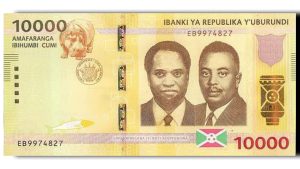
1 USD is equal to 2,077.45 Currency code for the burundian franc is BIF.
Also see: How To Maintain Good Hygiene As A Man
13. Colombian Peso
Currency code for Colombian Pesos is COP.
Rates in Colombian Peso:
USD equals 4,487 CO2 (US dollar to Colombian peso).
EUR equals 4,496 COP (Euro to Colombian peso).
The Republic of Colombia uses the Colombian peso as its official currency. 100 centavos make up 1 COP. Centavos, however, are no longer in use as a result of inflation. With the start of the Colombian War of Independence from Spain in 1810, this money was initially issued to replace the Spanish real that had been in use up until that point.
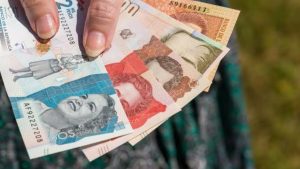
The Colombian peso has been linked to the US dollar, the British pound sterling, and the French franc at various points in time. Since 1980, when 1 USD was equivalent to 50 COP, devaluation has rapidly increased. The value of the Colombian peso has decreased by roughly 3,000 times as of this writing.
Recommended: Best Programming/Coding Schools In The World 2024
14. Congolese Franc (CDF): Given its current state of economic difficulties, the Congolese franc (CDF) is among the world’s weakest currencies.The 1980s saw a downturn in the Democratic Republic of the Congo’s (DRC) economy, which contributed to the sharp decline in the value of the franc. The First and Second Congo Wars severely hindered the nation’s economic growth, which is why the DRC is ranked so poorly on the UN Human Development Index.
Political instability, internal wars, and difficulties with administration are just a few of the many problems that the Democratic Republic of the Congo, the nation that uses the CDF, has had to deal with. The Congolese Franc’s decline has been greatly influenced by these reasons.
Taking a diversified strategy is necessary to address the economic risks associated with the Congolese Franc.
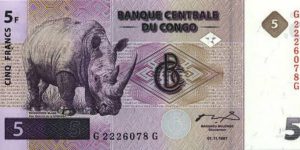
A favourable climate for economic growth must be established via improved governance, political stability, and successful economic policies. Beyond its present reliance on natural resources, initiatives to diversify the economy can also help to promote long-term stability by lessening the currency’s vulnerability to shocks from outside sources.
15. São Tomé and Príncipe Dobra (STN): Due to a number of economic issues, the official currency of the island country, the São Tomé and Príncipe Dobra (STN), is now one of the weakest in the world. The Portuguese escudo was phased out and replaced with the official money in 1977. A new dobra was needed because of the high rate of inflation, and it was redenominated at a 1000:1 ratio in January 2018.
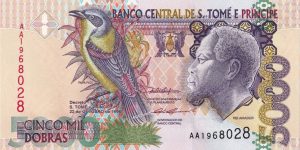
Since then, the island country has recovered very well, although the dobra is still low due to limited resources and poverty in some places. Despite São Tomé and Príncipe’s captivating scenery and tourist potential, the country faces formidable economic obstacles. The Dobra people suffer a number of issues, including an excessive reliance on agriculture, a vulnerability to external shocks, and a lack of economic diversification.
Recommended: How to write a perfect and professional CV
A lot of countries have had weak currencies at some point in the past. In 2015, China faced depreciating currency, which was purposefully injected. After a long era of a strong currency, the government intervened, weakening the Chinese yuan. Apart from internal and international government involvement, monetary sanctions are another factor that might influence the strength of a country’s currency. The Russian ruble, for example, became weak in 2014 as a result of sanctions.

Edeh Samuel Chukwuemeka, ACMC, is a lawyer and a certified mediator/conciliator in Nigeria. He is also a developer with knowledge in various programming languages. Samuel is determined to leverage his skills in technology, SEO, and legal practice to revolutionize the legal profession worldwide by creating web and mobile applications that simplify legal research. Sam is also passionate about educating and providing valuable information to people.